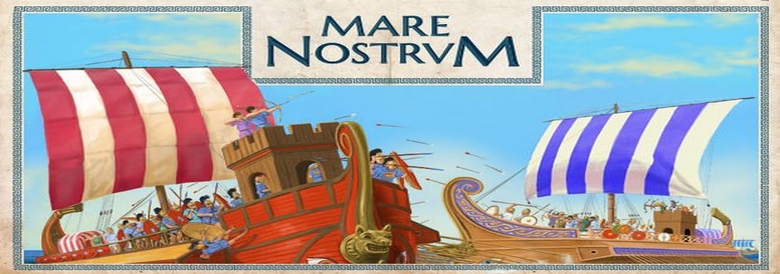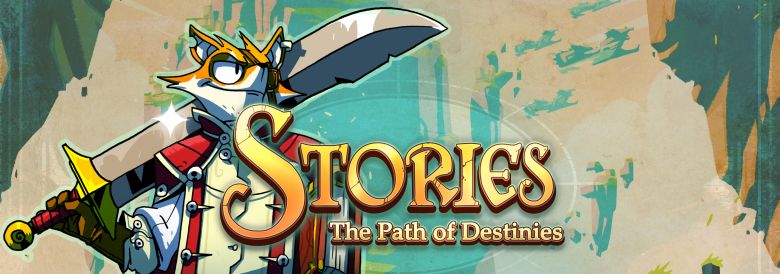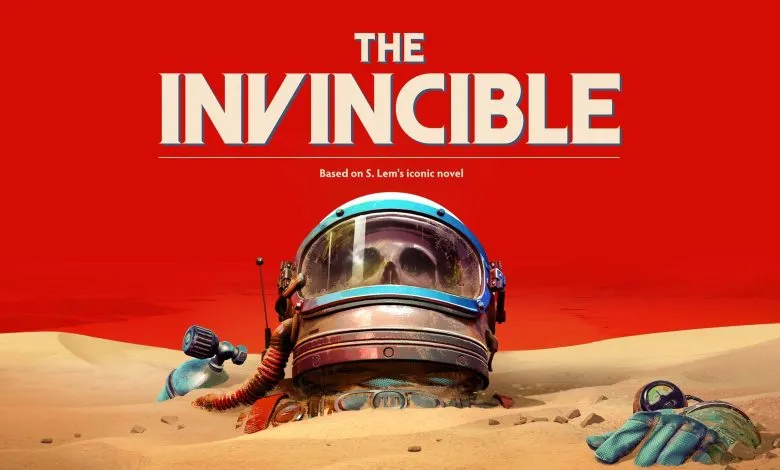
Stanislav Lem and his work are generally known in Greece mainly through Solaris, the author's best-known book and through its film adaptation by Andrei Tarkovsky (and more recently by Steven Soderbergh).His book "The Invincible" was first published in 1964, a few years after Solaris, but we have seen it in Greek very recently by the Thessalonikean editions of Unknown Kantath. It is an extremely fresh short story of the so-called "hard" science fiction -hard sci-fi - that deals with the distant future of humanity but is based on existing technologies and ideas, avoiding magical and exotic technologies. Without dwelling only on the technical jargon of exploring an exoplanet, Lem manages to set up a whole world with its own rules and logic, while raising the question of human expansion and exploration and the ethics behind these ventures.
"The Invincible" is an adaptation of Lem's book, from Polish Starward Industries and publisher 11 bit studios, known for an excellent anthology of published titles such as Frostpunk, Beat Cop and This War of Mine among others. In the book, the narrative follows the crew of the Invincible, a super-equipped research vessel that lands on the planet Regis III to investigate the unique conditions on the surface. A new story based on the world of the book is written in the game, involving another, smaller research vessel that arrives on the same planet a few days earlier than the Invincible. The Dragonfly, as it is called, is a small research vessel with a small crew of scientists. It belongs to the rival faction from Invincible and there is a cold war rivalry between them in a much more extended space race.
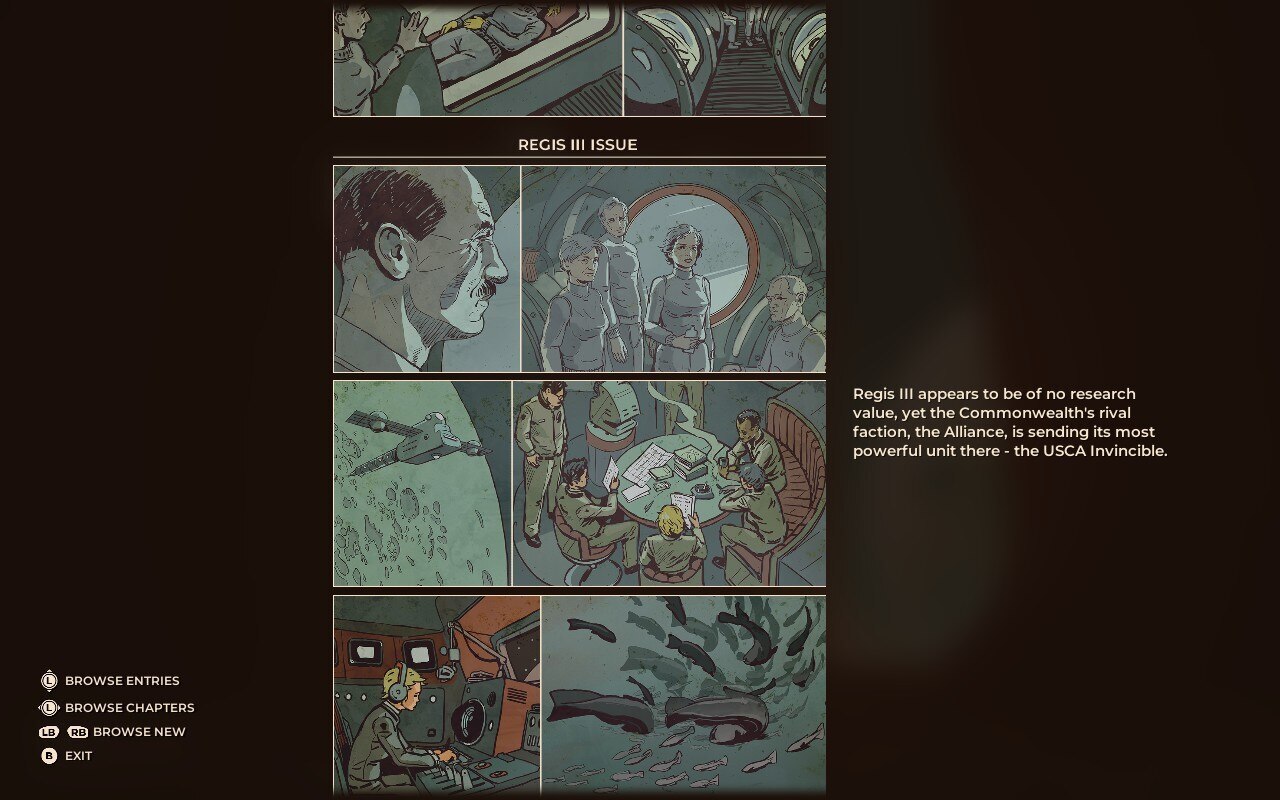
The Invincible belongs to the genre of interactive narrative-based games and has many similarities to Firewatch in the way the narrative is told. We begin the adventure with Yasna, an astrobiologist, who wakes up on the planet's surface suffering from limited amnesia, meaning that while she remembers being part of the space mission, she doesn't remember the last few hours and how she got there. After using her talents and scientific training, she regains communication with the orbiting mothership and the mission commander, Astrogator Novik. Thus the main mechanism driving the narrative and gameplay is her reporting what she sees to her supervisor and receiving orders from him on how to proceed.
Here I emphasize again that we are talking about a title that from the very beginning is addressed to the limited audience that loves the tranquility and the minimal interaction requirements of narrative based games. We see the world through Yasna's helmet and it works well, giving a sense of both claustrophobia and acting as barrier between the aggressive world out there. There are no puzzles in the game other than interacting with maps for orientation and the simple pressing of buttons on atompunk aesthetic machines scattered across the surface of Regis III. The player will be required to use a few tracking tools, such as a metal detector or cups which give a sense of exploration without much depth to their mechanisms.
The player's main involvement is in Yasna's choice of dialogue with Novik, which can be either completely honest or more cryptic depending on what he feels about his role and what he really knows about the mission.
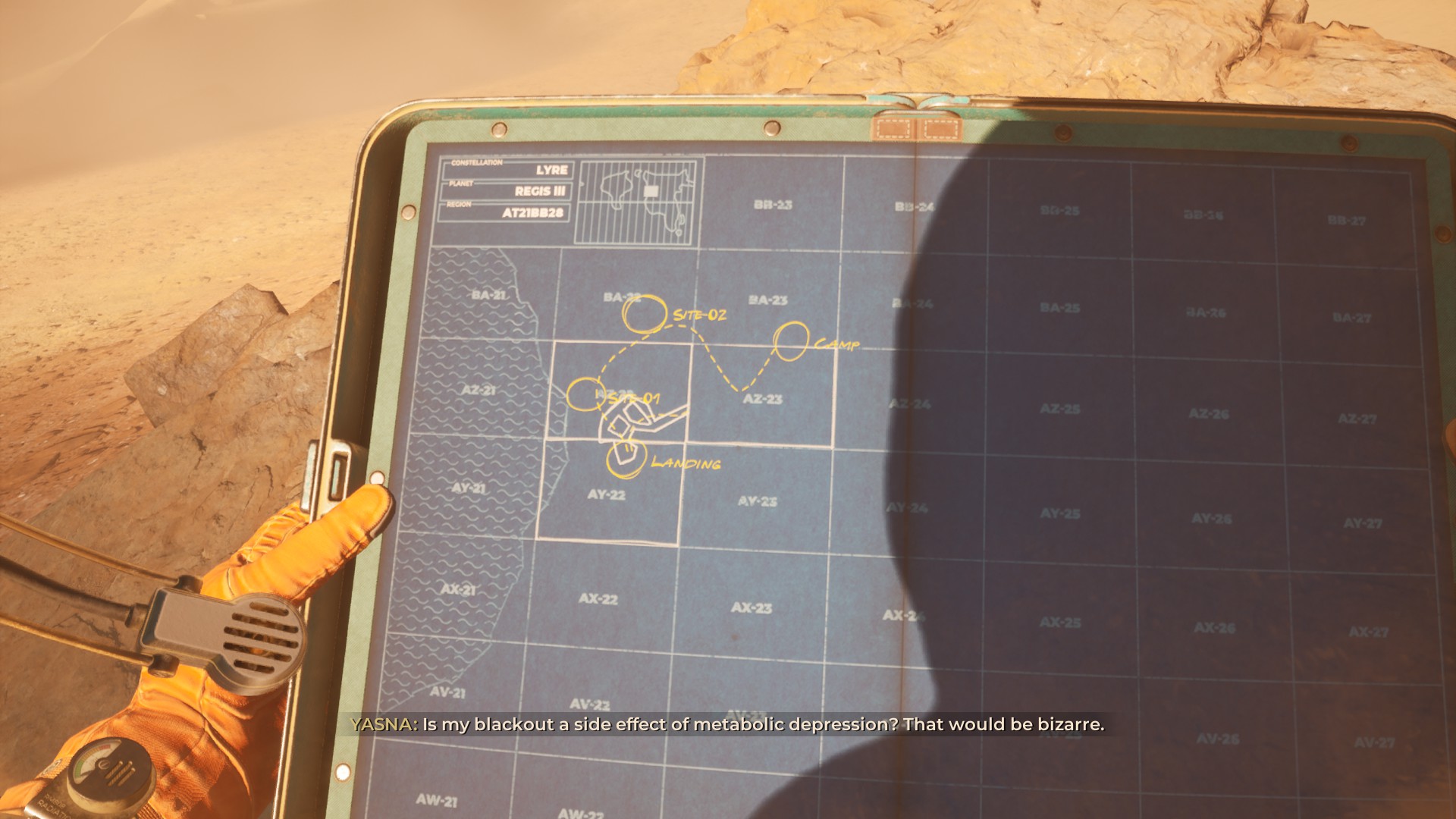
I think the strongest element is the aesthetic department. The approach taken was atompunk, which is a projection of the aesthetic s of the 60's, the space race era and rocketry in the far future of exoplanetary exploration. The technical equipment consisted of consoles filled with analogue knobs and rotary selectors, huge monochrome screens, transistors and space suits reminiscent of the Mercury program and their Soviet counterparts. In general, much inspiration has been drawn from the retro-futuristic depictions that dominated the covers of science fiction novels and comic books of the 60's-70's.
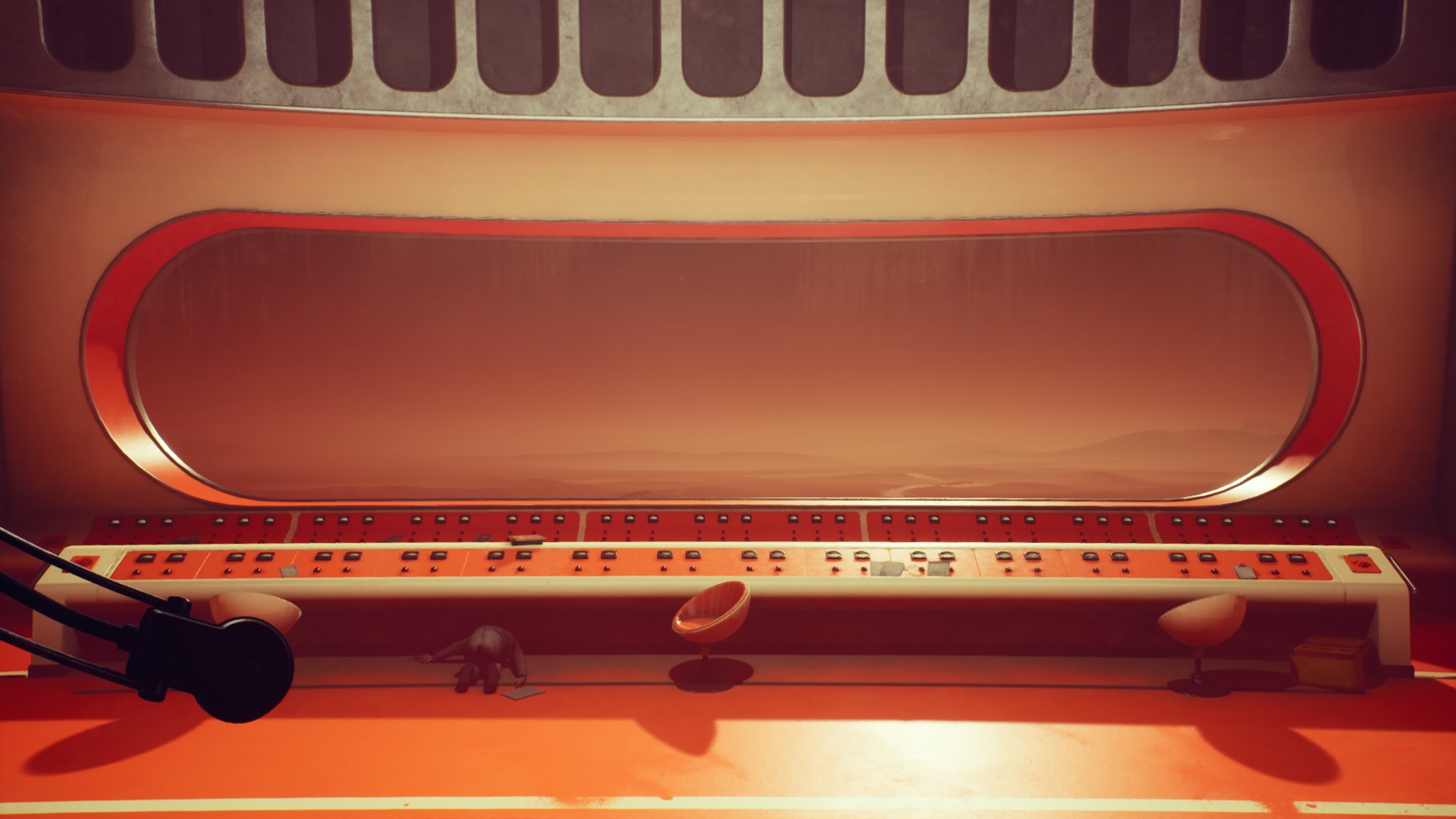
As Yasna unravels the mystery of the Regis and tries to rescue the lost crew members of her expedition, her adventure is captured in comics that can be seen in the main menu or during the initial loading screen when continuing a session. Additionally there are online and extra comics that offer information about what happened to Regis and in any case show great care and love for the transfer of Lem's work by the creators of Starward Industries. Also after the first major patch the possibility of loading specific chapters instead of starting the whole story from the beginning to unlock alternative endings was added. As mentioned, the options in the dialogues with Novik lead players to different endings.
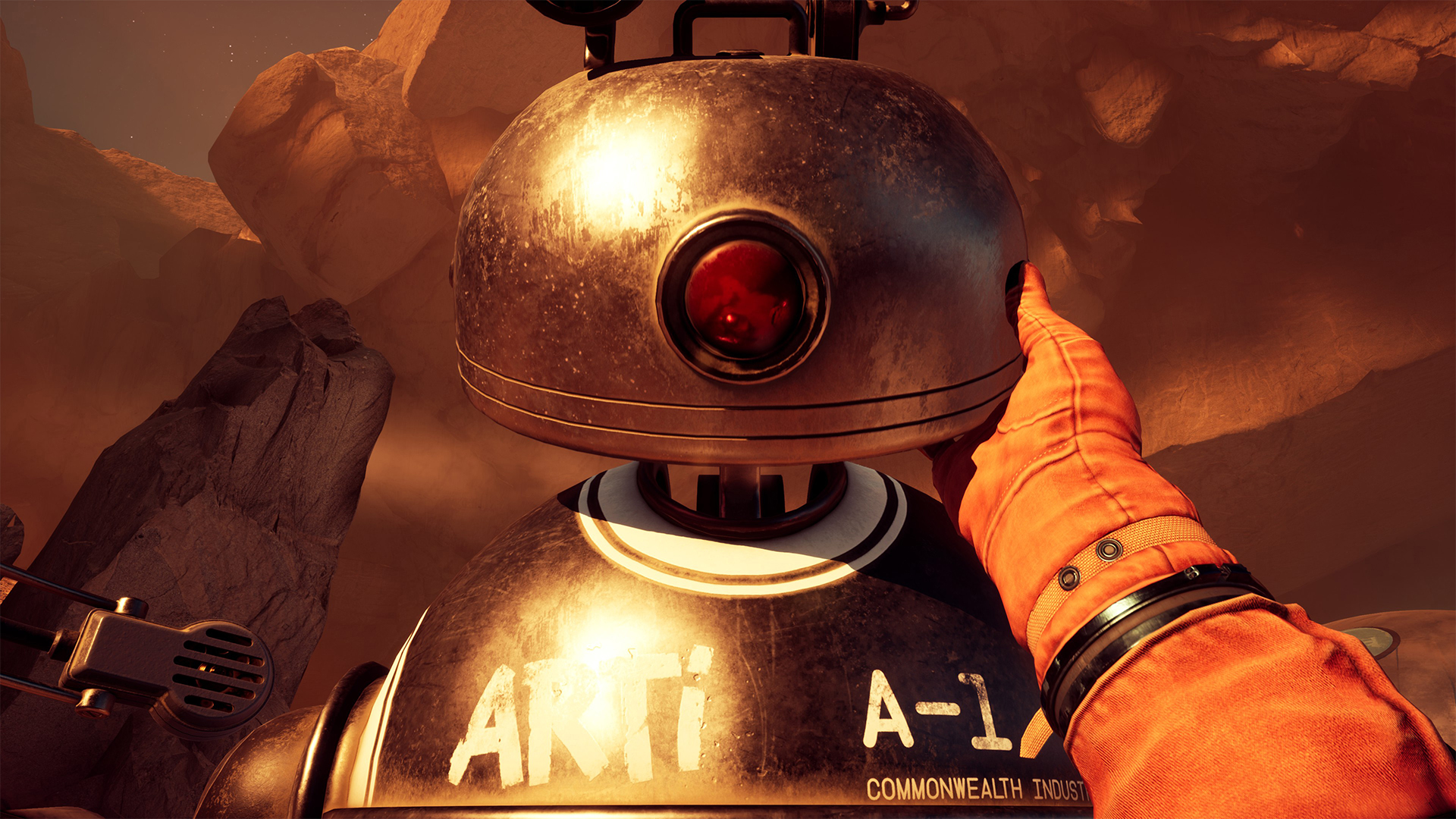
On the technical side of the title, although there were some comments about bugs from players, playing the version after the first big patch, I didn't find anything. Only problem was a momentary frame-rate dip in some specific areas towards the end of the game with quite a large map available to explore. Playing it on Steam Deck as well my experience was uneventful.
The music of the game by Brunon Lubas is excellent. It manages to give the necessary feeling of space loneliness and the otherworldly. Combined with the endless deserts of the planet, the rocky formations on the horizon and the red giant looming impossibly overhead, it evokes the appropriate feeling of insignificance and comparison to these timeless and immense sizes.
Finally, I feel like it should be mentioned how the game stands in relation to the book. This is because I think the case of The Invincible is very unique. It already addresses a niche audience, of narrative based games. But beyond that it also concerns the even more niche audience of hard sci-fi and I think Lem fans would be interested to know how well this adaptation was done. For the purposes of this review I read the book after finishing the game and I find that the game was written with tremendous respect and obvious love for the original text, which poses the question of the spread of humans to other worlds and on what terms this can be done.

It took me around eight hours to complete The Invincible and while playing it, I was engrossed in its world, walking its deserts, crossing electrical storms in vehicles that looked like space lada niva's, wondering what had happened to the lost crew and the planet's fauna. He managed to keep me in a constant game of guesswork until the last few chapters when it finally became clear what was going on. I loved the atompunk aesthetic as well as all the art direction. I perhaps object somewhat to Novik and Yasna's completely British accents, however I acknowledge that their performances are amazing even though there is occasionally an annoying repetition in the idle dialogue when nothing is happening and we're just walking along. Also perhaps more time could have been spent in the introduction to make us feel that the lost crew actually meant something and also to integrate Yasna's role as an astrobiologist possibly researching and collecting specimens a little more organically.
I think it's a bit steep at its current price of 30 euros, but it will fully satisfy the fans of narrative based games and science fiction. I think it achieves the demands of science fiction, the sense of exploration and asking the big questions about our place in the universe. I personally thought about it for days after finishing it.
RATING - 83%
83%
A pleasant Sci-Fi shot
A narrative experience with stunning art direction, based on the work of the great Stanislav Lem














